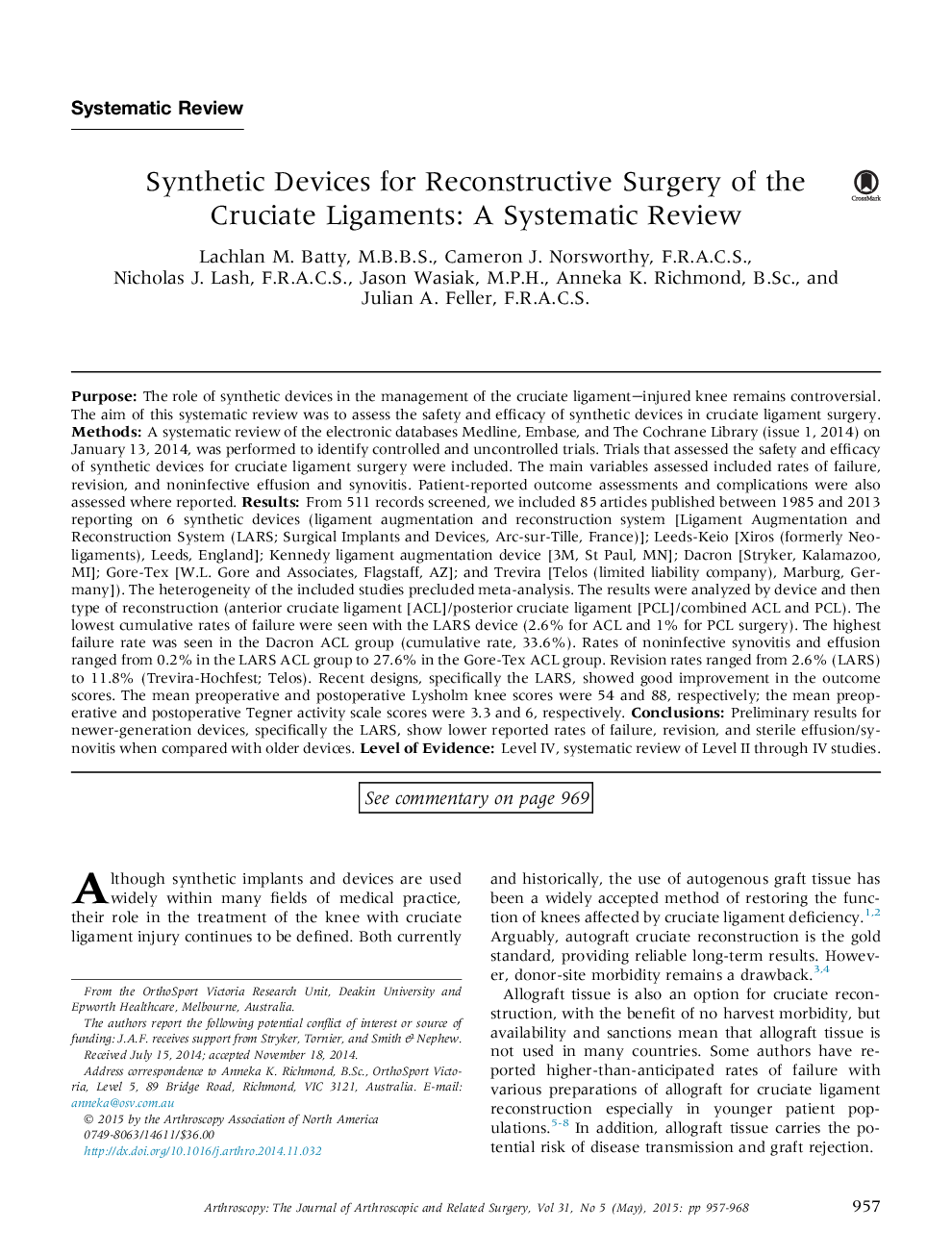| Article ID | Journal | Published Year | Pages | File Type |
|---|---|---|---|---|
| 4042637 | Arthroscopy: The Journal of Arthroscopic & Related Surgery | 2015 | 12 Pages |
PurposeThe role of synthetic devices in the management of the cruciate ligament–injured knee remains controversial. The aim of this systematic review was to assess the safety and efficacy of synthetic devices in cruciate ligament surgery.MethodsA systematic review of the electronic databases Medline, Embase, and The Cochrane Library (issue 1, 2014) on January 13, 2014, was performed to identify controlled and uncontrolled trials. Trials that assessed the safety and efficacy of synthetic devices for cruciate ligament surgery were included. The main variables assessed included rates of failure, revision, and noninfective effusion and synovitis. Patient-reported outcome assessments and complications were also assessed where reported.ResultsFrom 511 records screened, we included 85 articles published between 1985 and 2013 reporting on 6 synthetic devices (ligament augmentation and reconstruction system [Ligament Augmentation and Reconstruction System (LARS; Surgical Implants and Devices, Arc-sur-Tille, France)]; Leeds-Keio [Xiros (formerly Neoligaments), Leeds, England]; Kennedy ligament augmentation device [3M, St Paul, MN]; Dacron [Stryker, Kalamazoo, MI]; Gore-Tex [W.L. Gore and Associates, Flagstaff, AZ]; and Trevira [Telos (limited liability company), Marburg, Germany]). The heterogeneity of the included studies precluded meta-analysis. The results were analyzed by device and then type of reconstruction (anterior cruciate ligament [ACL]/posterior cruciate ligament [PCL]/combined ACL and PCL). The lowest cumulative rates of failure were seen with the LARS device (2.6% for ACL and 1% for PCL surgery). The highest failure rate was seen in the Dacron ACL group (cumulative rate, 33.6%). Rates of noninfective synovitis and effusion ranged from 0.2% in the LARS ACL group to 27.6% in the Gore-Tex ACL group. Revision rates ranged from 2.6% (LARS) to 11.8% (Trevira-Hochfest; Telos). Recent designs, specifically the LARS, showed good improvement in the outcome scores. The mean preoperative and postoperative Lysholm knee scores were 54 and 88, respectively; the mean preoperative and postoperative Tegner activity scale scores were 3.3 and 6, respectively.ConclusionsPreliminary results for newer-generation devices, specifically the LARS, show lower reported rates of failure, revision, and sterile effusion/synovitis when compared with older devices.Level of EvidenceLevel IV, systematic review of Level II through IV studies.
